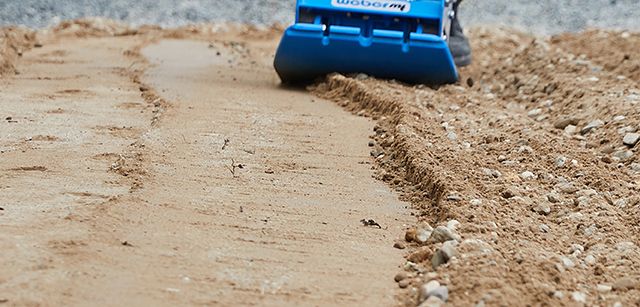The science behind soil compaction: An overview of purposes and processes

Examples of compaction surround us on a daily basis. Whether it’s the way following someone’s footprints through sand is easier than leading or the way that you push down on your suitcase to pack all of your clothes in, the process is the same and so are the results. And, especially in construction, they’re essential to creating a solid base to build on.
When it comes to soil compaction, there’s more than one way to increase the density of the surface you’re working on. The end result is always the same, however, because by applying pressure to a surface you’re able to remove excess air and increase its density; condensing its mass to be more compact, stronger underfoot and able to support greater weight.
Here we’ll take a look at how it works, what makes the surfaces out there different and which tools are best suited to them.
The physics behind static compaction
Let’s start with the soil you might find in a bag of potting mix, for example. You can think of it as a mixture of air, water and solid particles held together by the friction between them, and you may have noticed that the soil near the top of the bag is lighter and easier to handle. This is because there’s less force trying to remove the voids of air and water between particles, and at the bottom of the bag you may notice the soil is more clumped or compact.
The pressure exerted from above causes the tiny voids of air and moisture between particles to reduce and make the soil firmer, in effect – compaction. This method of simply applying a load on top is called static compaction, but there are ways to increase the level of compaction by building adding to this method.
Dynamic soil compaction
By combining the pressure from a load with vibration, we get dynamic soil compaction. The applications of this kind of compaction are seen just about anywhere you look and there are two distinct principles – ramming and vibrating.
Ramming, or tamping, uses the repetitive force of a load hitting the ground to create compaction. Its effectiveness depends on the weight of the moving plate and the force it hits the soil, and it can be used in confined or open areas for landscape and hardscape projects.
Vibration increases soil density using a solid plate that moves back and forth to shift soil particles at a high rate. The movement is best suited to larger particles (more on this later), because it allows them to shift into the right place.
How to know which method will work best
With an idea of what you need a compactor or rammer for, before you look at purchasing one you should consider what you will be using it on. Soil falls into two categories, and each can be compacted effectively in different ways.
Granular soils consist mainly of sand and gravel. You can see the large particles or stones with the naked eye and the best method of compacting them is by vibration because they’re loosely packed together. Vibration works by allowing the soil to shift and fall under the weight above, so a plate compactor lets particles twist and turn until they find a position that limits their movement.
Cohesive soils, on the other hand, are made up of silts and clays. The small particles can be rubbed smoothly between your fingers and they can often be quite sticky. Because the particles are tightly packed to begin with, a trench rammer or vibratory tamper is best because it applies an impact force that squeezes any excess air and water out.